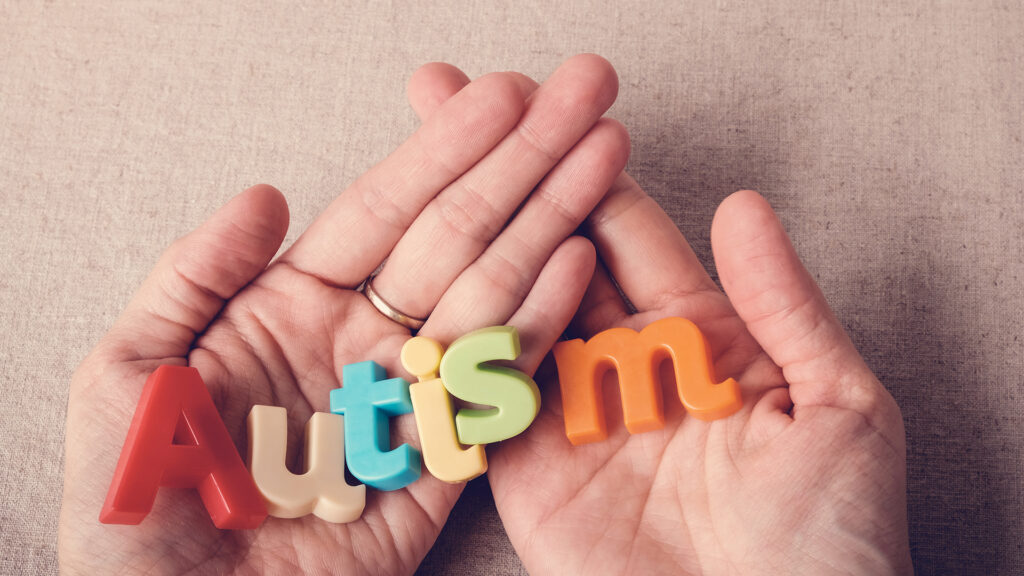Navigating work and parenting

When I was asked to write a blog, I was initially quite apprehensive. Having never written one before, I wasn’t quite sure where to start, so here goes.
As some of you reading will know I’m Lisa and I have worked at Loughborough University for seven years. I’m based in the Village Park working in student accommodation and I love what I do.

But what some of you may not know is that after work each day, I am lucky enough to go home to the most wonderful human! My son, Freddie. Freddie is eight years old, and he is autistic. The way he sees the world is slightly different to a lot of people, but it is utterly incredible.
The reason I wanted to write this blog was because I think it’s important to know the people behind their jobs. Often we go to work, do our job and nobody really knows what goes on in each other’s lives.
Working and parenting an autistic child can be a juggling act at times. Freddie thrives on routines, and any changes to that, such as sickness or holidays, can cause him a fair bit of anxiety.
So, this leads me to talk about working… working whilst things are difficult at home.
Trying to navigate each path of the different routes. Work can feel like an ‘escape from the chaos’ sometimes, but is it really? There are many times I’ve turned up to work subdued by the battle that withheld me from turning into work late because Freddie was having a tough time and refused to go into school. Then I’ll feel guilty when I haven’t been able to give 100% one day due to being exhausted from lack of sleep.
I am however extremely lucky to have supportive staff around me. My managers are able to accommodate my needs if problems arise. They are willing to listen if I need to speak out about needing support. This is the part that helps me by, the times when I need it most; having the option to work flexibly knowing that school holidays are approaching and how difficult it’ll be to sort childcare for a child who is heavily reluctant to change.
Whilst I am technically classed as a ‘carer’ for my son due to his disability, to me, I am his parent, not a carer. I juggle life because I like to strive and give everything my utmost best. I want to show my abilities to be capable of what’s expected of me.
When I look into the future, I would love the opportunity to work within the University’s Disability Support Service to provide support to students. I completed a job shadowing role there and it’s a field I would consider as I feel awareness could be spread in many ways. Not only that, but as a parent to an autistic child, I’d feel such ease knowing through higher education my child was fully supported at university.
Finally, I’d like to end with some quotes that really stick with me. Anyone that knows me knows that I talk positively about autism, I think it’s truly amazing and unique.
- Autism doesn’t come with a manual, it comes with a parent who never gives up
- I like to see autism referred to as a spectrum
- Autism affects people in all different ways
- Every person with autism has their own strengths and weaknesses
- If you have met one individual with autism, you’ve met one individual with autism
Lisa Sandell-Watson
Hospitality Assistant
The University recognises that there are many reasons why colleagues may need additional paid leave related to family circumstances. The Other Family-Related Leave policy aims to give managers greater ability to support and cater for the needs of their team. You can read more about the policy here.
Any staff member with a physical or hidden disability is welcome to join the Staff Inclusivity Group, which advocates for equality in the workplace for colleagues with physical or invisible disabilities.
The group is also a place to seek support from one another and challenge University policies and practices.
Equality, Diversity and Inclusion
Reflections, comments, discussion and opinion on EDI topics from Loughborough University staff and students
Join the discussion
5 Comments
Graham Lee
Not having much experience with autism it’s hard to understand how anyone with it will react to any specific situation. How you parents manage day to day tasks is just beyond me. I always feel you parents are hero’s but I guess love can overcome any obstacle life throughs at you.
Steve Rothberg
Great blog, Lisa! I agree “Often we go to work, do our job and nobody really knows what goes on in each other’s lives”. I hope Freddie likes being famous at Loughborough now!
Samantha
Fantastic blog!
Carl
Awesome blog and a great insight Lisa. One more thing to be very proud of – well done!
Dawn
Great blog Lisa, thank you for sharing. I think Freddie has a wonderful mum and Loughborough is lucky to have you. Wishing you all the best with future career aspirations too.